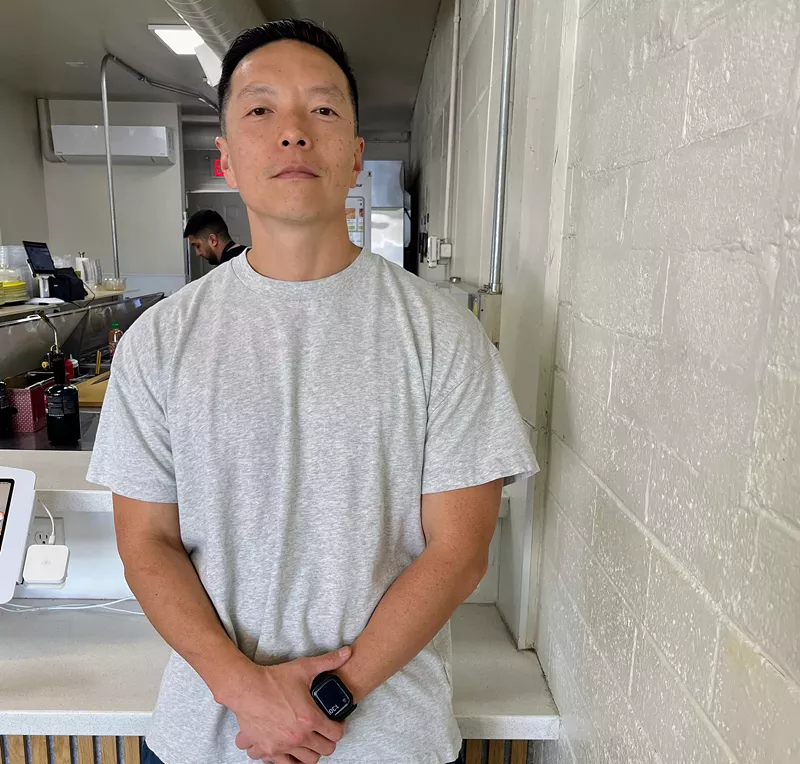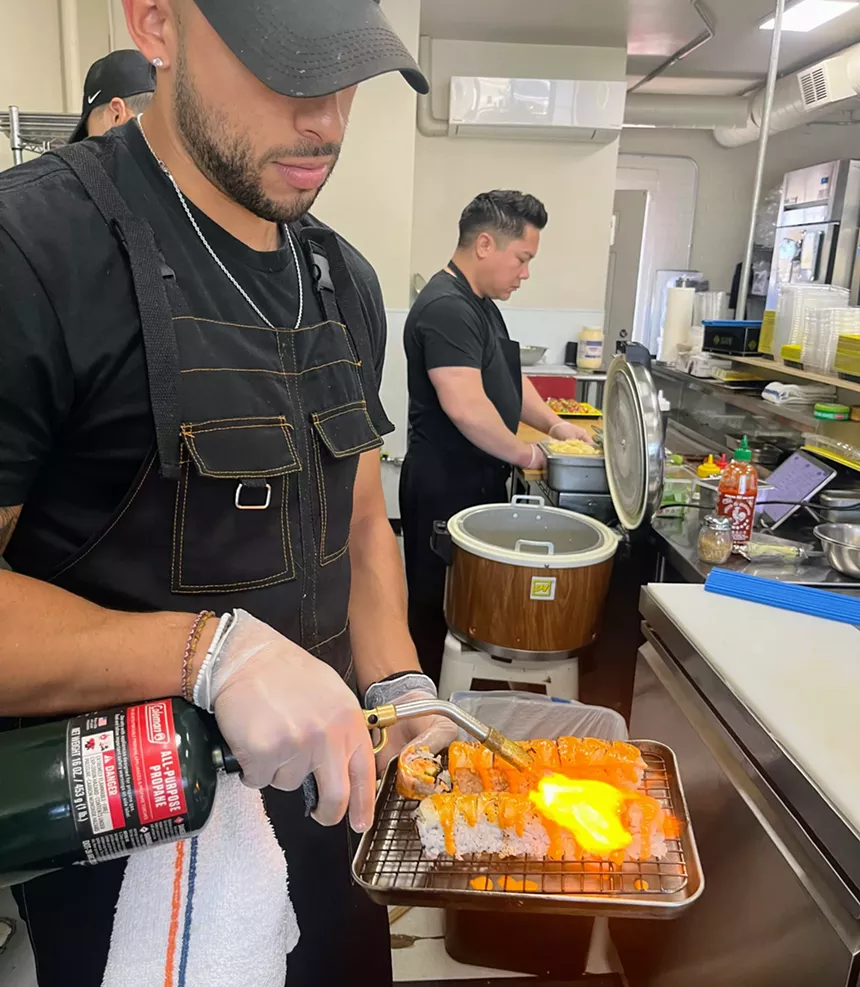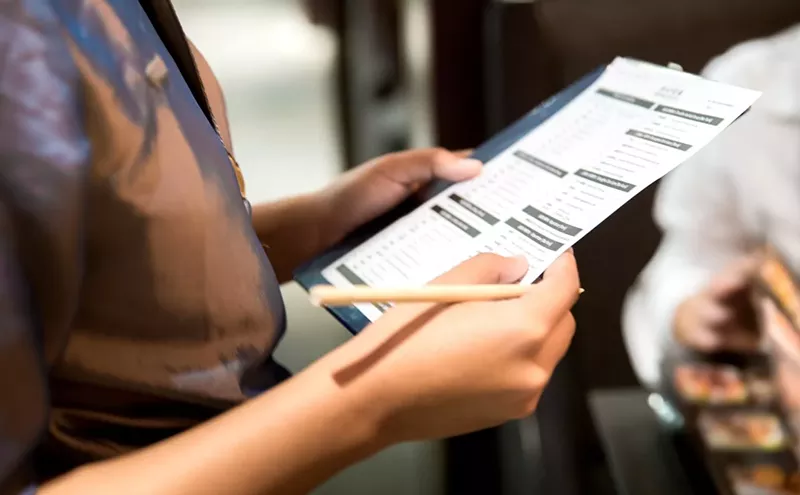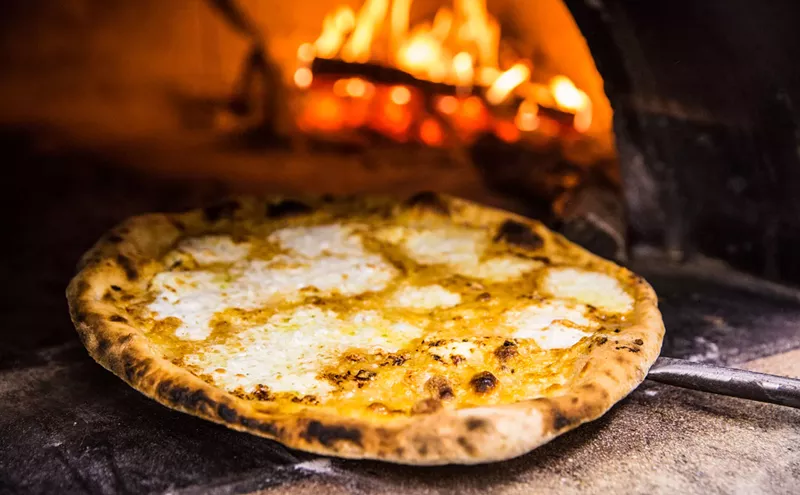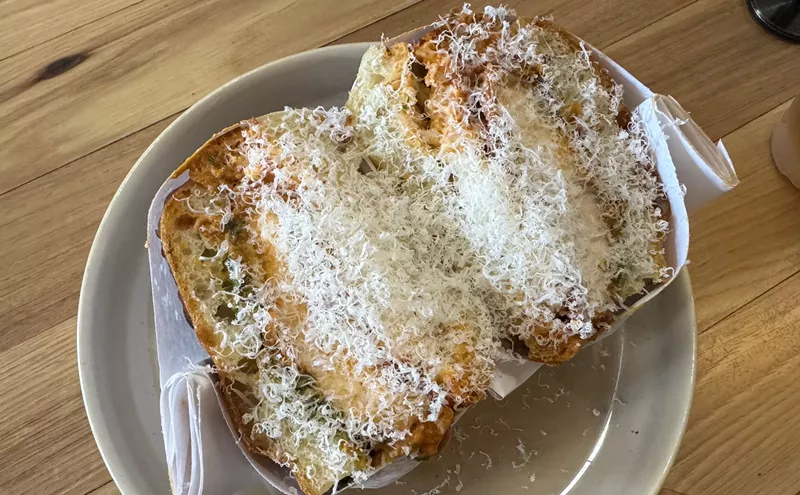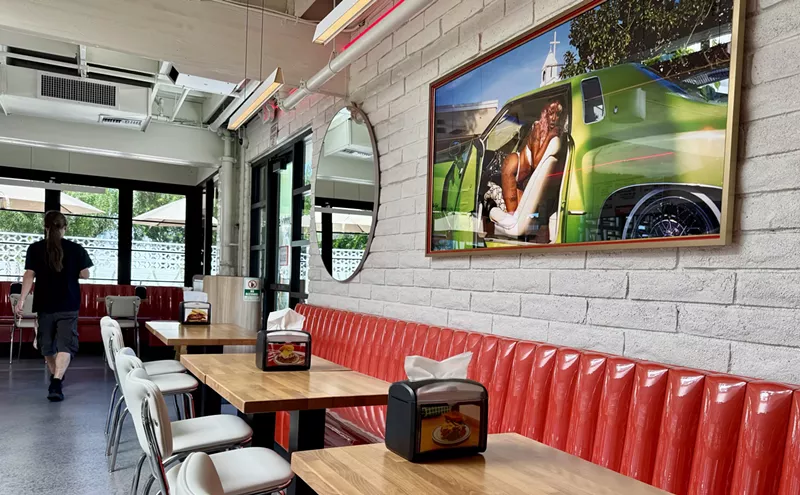To Phoenix, however, Sushi Friend is foremost humble local staple. Since it opened in 2021, it has doubled its team — to six employees. The restaurant recently began collaborating with food and cocktail creators to use their space on select Sundays and nights when they close shop at 7.
What started as a cozy neighborhood sushi joint has evolved into a hotspot. Kevin Min, the restaurant's founder and sushi chef, sees a steady flow of dine-in and to-go orders. You may know the restaurant's bright yellow exterior and playful happy face-esque logo, but don't mistake it. The restaurant's precision and execution set it apart in the Valley. “Efficiency and simplicity have to be the focus,” Min says. “People can get sushi anywhere — the same rolls with the same fish. But for me, it’s about serving our demographic more efficiently without sacrificing quality.
Top-Tier Sushi at a Reasonable Price
Upon entering the sushi factory, diners are greeted by Min or his team, who are likely handcrafting sushi at their own station, assisting customers, or prepping for the next wave of diners. It has that “where everybody knows your name” vibe.Guests order at one of the two point-of-sale devices on top of the front counter, a modern slat-wall setup. The digital menu is a sushi lover’s playground featuring specialty rolls, nigiri, and sashimi. Diners can also customize meals with real wasabi, ginger, miso soup, salads, and Japanese beer options. The seafood artisans are always attentive and
ready to assist their patrons.
“You don’t have to dress up to come here,” Min says. “And you can bring your kids. People say we could serve our rolls on wooden boards and charge double the price, but that’s not what we do here.”
Sushi Friend keeps its pricing fair. You can get a $2.50 miso soup, $5 salmon avocado hand rolls, and $7 veggie rolls, all made to order with fresh ingredients. That’s not to say Sushi Friend doesn’t serve high-end rolls. Take the $18 Kiro Roll, for example, featuring spicy Australian yellowtail, takuan, and a topping of Australian yellowtail, jalapeño, and cilantro, garnished with ponzu sauce.
We opted for the 3 Special Roll Combo for $46. Orders go straight to the sushi chefs, who prepare each roll in plain view. And within five minutes, our silky-smooth rolls arrived on a bright yellow plastic tray.
“You ordered our most popular roll,” Min says, pointing to the Seared Salmon Roll. “This is my bread and butter.” The hearty roll is packed with kanikama (imitation crab), cucumber, and spicy mayo, then topped with seared ocean trout, unagi sauce, and dyno sauce.
Next we tried the Fire Dragon Roll, stuffed with unagi (eel), crab mix, spicy tuna, cucumber, and tangy eel sauce. Our third choice was the Poke Roll, featuring kanikama and cucumber, topped with diced sashimi and poke sauce.
“You picked some great rolls,” Min says, noting that two are tied to his past.
From Corporate Sushi to His Own Shop
Min, now 44, started crafting sushi in the mid-2000s when the executive chef of RA Sushi recruited him. “RA hired me and trained me,” he recalls. When that chef later opened Stingray Sushi, he brought Min along.
“This Fire Dragon Roll you ordered,” Min shares. “I brought it from Stingray.”
Min worked at Stingray’s Scottsdale location from 2004 to 2016, refining his craft. He perfected knife skills, ensuring precise fish cutting and cleaning while mastering sushi rice preparation to hold its shape. Rolling and slicing sushi precisely required finely tuned hand-eye coordination, a skill he sharpened over the years.
Min also mastered cutting sashimi, perfecting the technique of slicing against the grain to create tender, delicate pieces. Give them 24 hours' notice and you can also get them as toppings on Sushi Friend's mind-blowing sushi cakes.
When the three Stingray Sushi locations closed eight years ago, Min found himself at a crossroads. In 2018 he set out to launching his own catering business, Happy Fish. His operation quickly gained traction, preparing corporate sushi orders for Charles Schwab, Intel, Honeywell, and Northrop Grumman. He got his foot in the door through FoodWorks, a platform connecting local restaurants and small businesses with large enterprises.
“They’d get me into their kitchens,” Min explains. “Give me an area like this, and I’d bring my ingredients.” The access to commercial kitchens allowed him to prep and sell his sushi with low overhead.
"The Poke Roll you ordered — I created that during my catering days," Min says. "I had leftover fish, so I turned them into a toppings."
Soon he realized that he could open his own shop using that same streamlined process. But before he could act on that insight, the pandemic hit, putting the brakes on the catering business. He and his wife, Jane Min, began making sushi from home.
“I started delivering sushi platters throughout the Valley,” Min recalls. “Restaurants were all closed, so we did pretty good.”
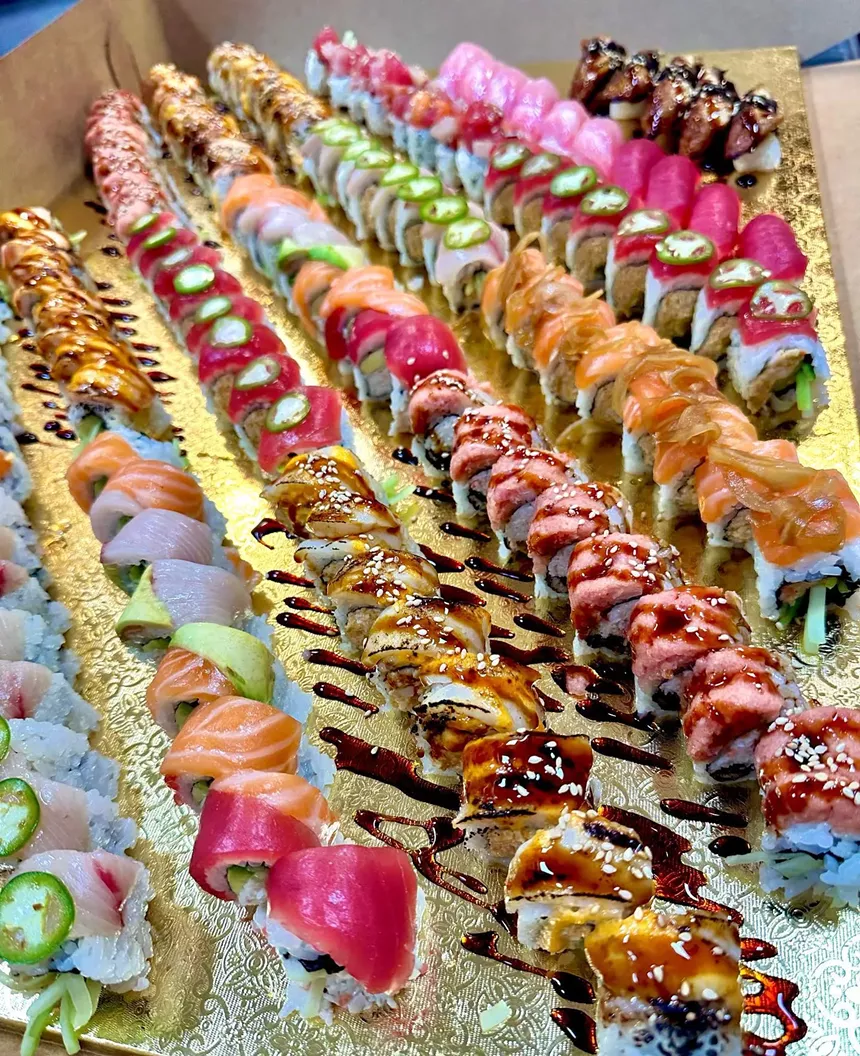
The couple knew a home-based sushi business wasn’t a long-term solution. “So we found this spot — which had been vacant for 10 years,” he says. They secured a great deal on the lease, but reality set in quickly.
“We were scared,” Min admits. "Really scared. We were also having a baby." Their contractor quoted them $35,000 for renovations. Then things got worse. “The previous tenant built everything without permits, so we had to tear it all down and rebuild from the ground up,” Min explains. The space had no plumbing, no electricity, and no AC. On the verge of throwing in the towel, Min found encouragement from his wife, Jane. “My lady was like, ‘Oh, you should continue,’” he says.
They kept making sushi and delivering platters while juggling the build-out. What was supposed to take a few months stretched into a year and a half. Costs soared to $100,000.
Finally, in December 2021, with COVID-19 restrictions easing, Sushi Friend opened. During the interview, Min gestures toward his team in the kitchen and dining area — some of whom he met over his 20 years in the Phoenix sushi scene.
“They were all here initially to help, just working for nothing,” he says.
Over time, he began hiring his friends one by one, gradually growing the team.
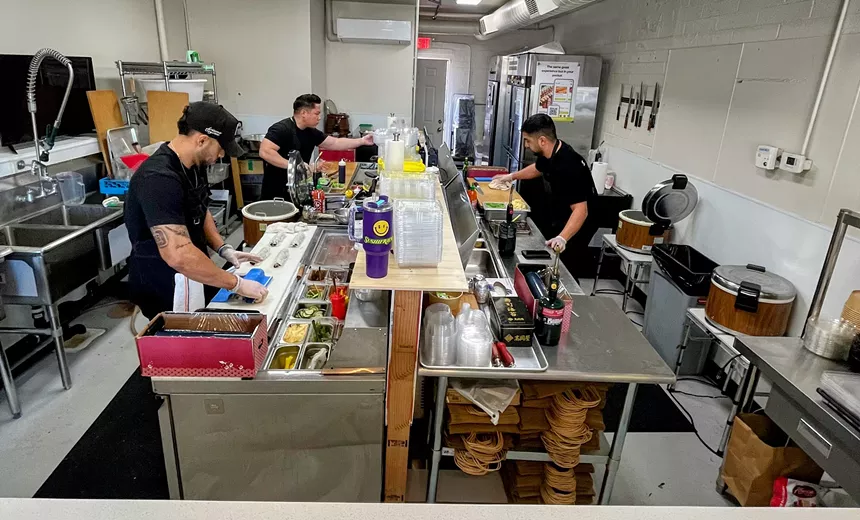
Collaboration with other local creators
Min, who once benefited from access to corporate kitchens, is now paying it forward by opening Sushi Friend’s space to other food and drink creators.“We have Kevin Nguyen here,” Min says, motioning to one of his employees, “who comes from a cocktail background. He suggested running the cocktail program while inviting other chefs to set up their shop in our dining space.”
At the first collaboration in early January, Nguyen crafted specialty drinks like the Rule of Plum — a mix of plum vodka and liqueur, guava syrup, and a splash of lime juice, and the Oolong Old Fashion, featuring Earl Grey tea infused with Japanese whiskey with black sesame syrup. When the restaurant hosted Otra Pizzeria, diners ordered pies outside and came in for drinks.
For Min, it’s all about building community. As Sushi Friend rolls on, Min stays true to his mission of serving top-tier sushi without the frills. It's the kind of friend everyone wants in their neighborhood.
Sushi Friend

